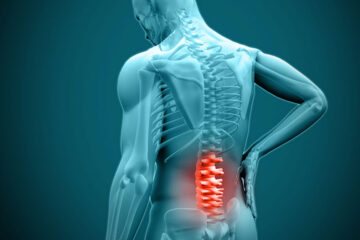How Successful Is Total Disc Replacement Surgery?


How Successful Is Total Disc Replacement Surgery?
Total disc replacement surgery is a procedure designed to relieve pain and restore function for individuals suffering from degenerative disc disease, herniated discs, or other spine-related conditions. It involves removing a damaged spinal disc and replacing it with an artificial disc, which allows the spine to maintain its normal range of motion. But how successful is this procedure, and what factors contribute to its effectiveness?
Success Rates
Total disc replacement surgery has shown high success rates for carefully selected patients. Many individuals experience significant pain relief, improved mobility, and a return to their normal daily activities. Several studies have reported success rates of around 80-90%, meaning most patients see a marked improvement in their symptoms.
The success of the surgery is often measured by:
- Pain relief: One of the main goals of disc replacement is to reduce or eliminate back and neck pain caused by damaged discs. Many patients report substantial pain relief within weeks of the procedure.
- Restored mobility: Unlike spinal fusion, which restricts movement, disc replacement aims to preserve the natural motion of the spine. Most patients regain flexibility and the ability to perform physical activities with ease.
- Faster recovery: Compared to spinal fusion, total disc replacement typically involves a quicker recovery time, allowing patients to return to work and other activities sooner.
Factors That Affect Success
While total disc replacement surgery has a high success rate, several factors can influence its outcome:
- Patient selection: Not all patients are ideal candidates for disc replacement surgery. Individuals with certain conditions, such as severe osteoporosis, advanced spinal arthritis, or spinal deformities, may not benefit from this procedure. Proper evaluation by a healthcare provider is crucial to determine if disc replacement is the best option.
- Surgical expertise: The skill and experience of the surgeon play a significant role in the success of the procedure. A highly skilled surgeon with expertise in disc replacement will be more likely to achieve positive outcomes, minimize complications, and ensure a smoother recovery.
- Post-surgery care: Following the surgery, patients must adhere to a structured rehabilitation program that includes physical therapy and lifestyle modifications. Patients who commit to post-operative care tend to have better long-term outcomes and fewer complications.
Long-Term Outcomes
Total disc replacement surgery is still considered a relatively new procedure compared to spinal fusion, but long-term studies have shown promising results. Most patients continue to experience pain relief and improved function years after the surgery. The artificial discs used in the procedure are designed to be durable and long-lasting, with minimal wear over time.
One of the key advantages of total disc replacement is the preservation of motion in the spine, which helps reduce the risk of adjacent segment disease (ASD). This condition occurs when the spinal discs above or below the fusion site wear out prematurely due to increased stress. Since total disc replacement maintains natural motion, it significantly lowers the risk of ASD compared to spinal fusion.
Complications and Risks
While total disc replacement surgery is generally safe, as with any surgical procedure, there are potential risks and complications. These can include infection, bleeding, nerve damage, or implant failure. However, the rate of complications is relatively low, and most patients experience a smooth recovery.
In some cases, the artificial disc may shift or wear out over time, requiring revision surgery. However, advancements in disc design and materials have made these occurrences less common.
Patient Satisfaction
Patient satisfaction following total disc replacement is generally high, with many individuals reporting a significant improvement in their quality of life. They often experience greater freedom of movement, reduced reliance on pain medications, and the ability to engage in activities that were previously too painful.
Additionally, patients appreciate that disc replacement offers a less invasive alternative to spinal fusion, preserving their spine’s natural motion and reducing recovery time.
Total disc replacement surgery has proven to be a highly successful option for individuals suffering from chronic back or neck pain due to degenerative disc disease or herniated discs. With proper patient selection, skilled surgical execution, and diligent post-operative care, most patients experience lasting pain relief, restored mobility, and improved quality of life. While there are risks associated with the procedure, the overall success rate is high, making total disc replacement an attractive alternative to spinal fusion for those who qualify. If you're considering disc replacement surgery, consulting with a spine specialist can help determine if this procedure is the right choice for you.



